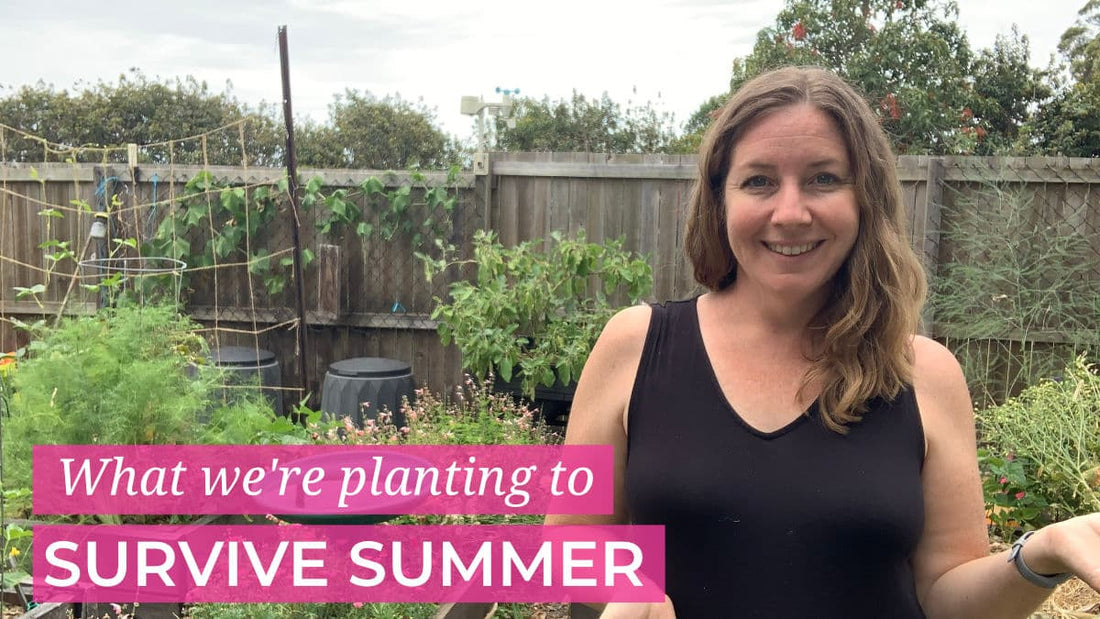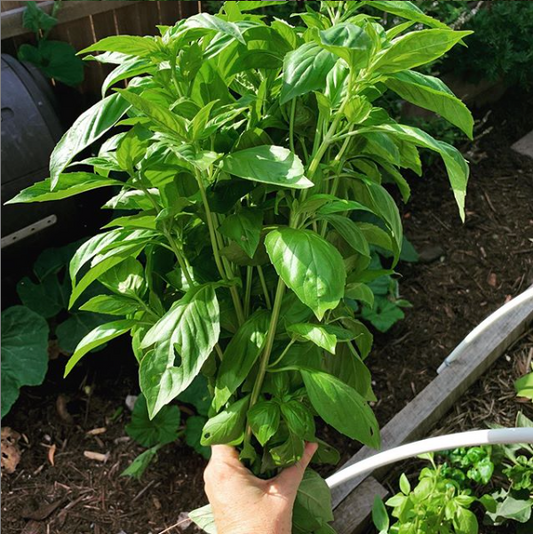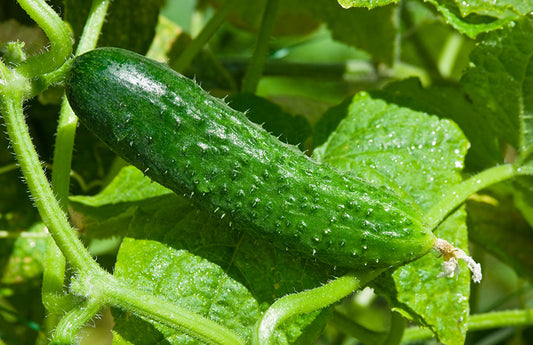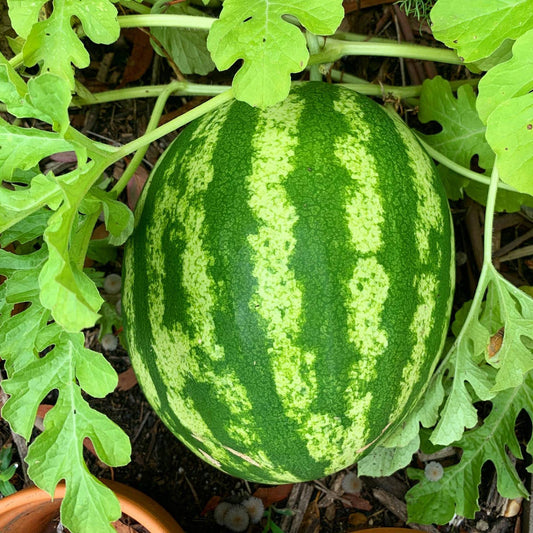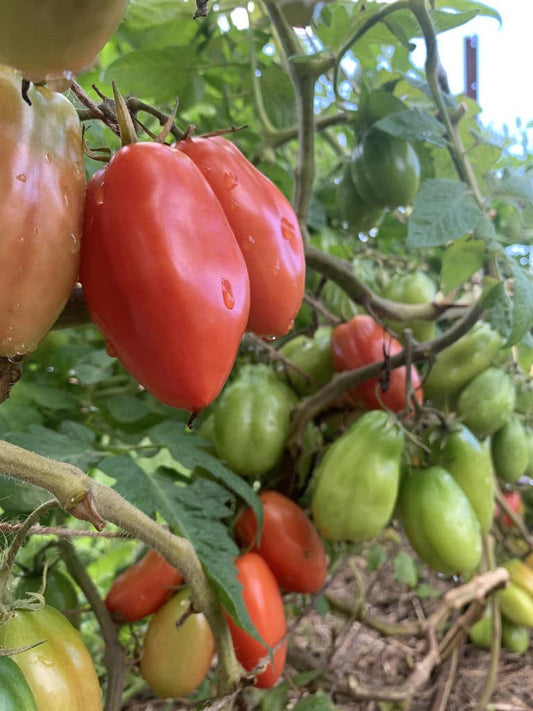Growing food in summer during the subtropics is very challenging. It’s too hot, often humid and it’s either too wet or too dry. Bugs and diseases are extreme. It’s enough to turn an avid green thumb off.
This is why we scale back to around 50% capacity in our garden and plant things that are resilient and thrive during the warmer months.
Tips for growing over summer
When i first started this blog over a decade ago, there was little to no information on growing and timing things in the subtropics of Australia. Everything was geared towards southern temperate states, which I also believe is a hangover from Northern Hemisphere growing. Australia is just different.
Here are my tips for surviving summer.
Scale back
Summer for us is like winter for cool climates, but instead of things freezing, they cook. We scale back a lot of our garden beds and either rest them completely, or we do ‘cover crops’ in preparation for our best growing season Autumn. Often in our in ground gardens, we’ll just let the weeds take over. Note: our weeds are normally self sown vegetables that we’ve let go to seed so all is not lost.
Put up shade
Ever feel like the sun is just hotter here than when you visit southern states? Being closer to the equator, it is a thing. Often when plant growing instructions say full sun, for us in summer this means 4 hours instead of 8. To combat this, if you’ve picked the perfect spot that gets year round sun (which we definitely need in winter) you can erect shade protection. We opt for 30% shade that gives the plants enough sun to thrive while taking the sting off.
Pick a better growing position
We have two growing positions - our front garden and our back garden, or as I like to call them our Winter garden and our Summer Garden. Our front garden is ideal for winter growing as it is on the northern aspect of our property. However in summer, as it gets sun up to sun down, it is too hot for much to do well. Take the time to observe your positioning and see if there is a better spot to grow during the hot months. Try it out using temporary pots or containers (keeping in mind they will dry out faster during the heat.
Water deeply and Less often
I know this may seem counterintuitive, you think the plants need more water regularly when it’s hot - but we water less often but we do it for longer. This allows the water to penetrate the garden beds deeper, which in turn encourages plant root growth deep. On those hot days when the moisture evaporates on the surface of your garden bed, the plants won’t dry out as they are getting the moisture from deep down. You can test this out by watering and counting, then dig a hole to see how far the water has penetrated. If it’s not getting down very far, try again until the water has reached 15-20cm below the surface.
Tips for planting out seedlings when it’s hot
There is nothing worse than planting out seedlings (especially when you’ve grown them from seed) only for them to cook.
Harden off your seedlings
In the hot months it’s incredibly important to harden off your seedlings prior to planting out. To do this you’ll need to gradually introduce light to the plants before transplanting. We start with a couple hours of morning sun, then gradually increase it to the full sun over the space of 1-2 weeks.
Transplanting your seedlings
The best time to transplant is the afternoon. This will help the plant get over that shock before the heat sets in. We also like to apply seaweed solution to all our transplants to help with the shock. It’s also important to keep the water up to them until they are established.
Look into water gardening
If you’re looking for an interesting hobby you could look into doing more water gardening - either aquaponics or hydroponics. They are well suited to areas where it is very dry as well as you don’t need to water as often. You can check out our Aquaponics system here.
Plants we grow over the hot months
There are a selection of plant that just do better in the heat and humidity. These are some of our staple crops we grow here.
Corn
We have three runs of corn over the summer, we could effectively plant new crops every month but we do 3 different varieties so need to avoid cross pollination (it affects the taste not just for seed saving purposes). Corn are heavy feeders - on both water and nutrients, they need to be planted in grids to aid pollination. The one trick with them over summer is really timing of rain, we do best in Spring as that is generally our driest season, but if rain hits when the flowers are open and washed the pollen away it can cause the ears to not fully form.
Sweet Potatoes
This is a staple for us here in Summer. Very much a set and forget crop for us. We often let it just take over. If you want big tubers we recommend propagating slips, which is effectively taking cuttings and popping them in water until roots form. We have found that this gives us the biggest tubers as opposed to burying the vines as they grow. We do around a dozen per 1x1 garden bed. You also want to make sure your sweet potato bed has full sun if you want those large tubers.
Chilli
Another set and forget one for us here, just keep an eye on the fruit fly. Our favourite one to grow is the Thai Birdseye.
Capsicum
A great one that loves the heat, but again one that can be susceptible to fruit fly. If you want red fruit you will need to be patient as they can take a long time. We usually end up harvesting lots of green fruit as we get more that way.
Snake Beans
If you’re going to grow a bean over summer make sure it’s a snake bean. The texture is not for everyone as it is more tough, but we pick them on the small size to avoid that. The only problems we get is bean fly which is a tiny fly that lays eggs and the larvae tunnel through the stems which can cause setbacks in growth - but often kills regular green beans completely.
Loofah
Another one we always grow is loofah, they are slow to get growing but once the humidity kicks in so do they. They do need a lot of water, we grow ours in aquaponics. You can eat the young fruit, like a zucchini or leave them on the vine to fully dry for sponges.
Cucumbers
Cucumbers are a great staple to have for us, but they can have some issues over summer. You want to find varieties that do well in humidity (Suyo Long and Lebanese Muncher) are our favourites for summer. They are susceptible to powdery mildew and also cucumber fly. Cucamelon is also a great hardy one to grow as well if you can handle the ‘sour’ flavour.
Loose leaf lettuce varieties
Lettuce can be grown in summer with a bit of care. Choose loose leaf varieties as the heading types are likely to rot or bolt straight to seed. We love salad bowl and green oakleaf. You may want to either interplant under taller plants during summer or erect some shade to help keep them protected from the heat.
Perennial Greens
The staple of our summer garden is our perennial greens, from Malabar Spinach to Brazilian spinach along with the red veined sorrel. These guys are super resilient during summer to give you an ongoing supply.
Madagascar climbing beans
Madagascar climbing bean is a type of lima bean with a vigorous vine. We wait for these to dry on the vine then soak and cook to make all sorts of goodies. A great Borlotti or butter bean equivalent.
Blue Butterfly Peas
Blue butterfly peas are a fun one to grow with the kids, but gives you the flavour of a pea - when it’s not pea season. I believe it’s used as a medicinal tea and used for some traditional malaysian cooking. However we just add them to salads for that pea hit.
Beetroot
If you can get them growing before it gets too hot these are a great one to just set and forget as well. We love growing the cylindrica variety over summer as it has the long tap root and tends to handle the heat a lot better than other varieties.
Okra
Not a typical Australian addition to a garden but Okra a great staple to have. It’s prolific, resilient and so versatile in the kitchen.
Eggplant
Eggplant is a stock staple year round in our garden here in the subtropics. We love how resilient it is and versatile in the kitchen. I always used to have way too many until I found some good recipes and now I wouldn’t go without it.
Sweet Basil
Basil is the essence of a summer garden. Technically it can grow all year for us, but the flavour is phenomenal over the warm months. Keep it well pruned to avoid it going to flower, or just plant succession to make sure you have the sweet leaves on hand all summer long.
Sunflowers
Nothing says a summer garden more than sunflowers in my opinion. Whilst they are very heavy feeders and we find them too labour intensive to extract the seeds to eat ourselves, they are a great flower for beneficial insects and the chickens love them!
Do you scale back over summer? I’d love to know your strategies. Leave a comment below. And if you need help planning your garden year round, come join us inside dirt lovers.

